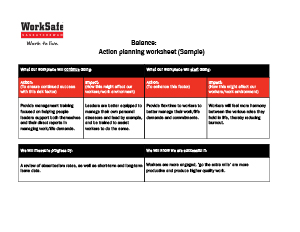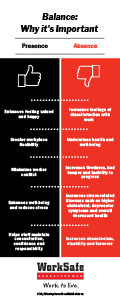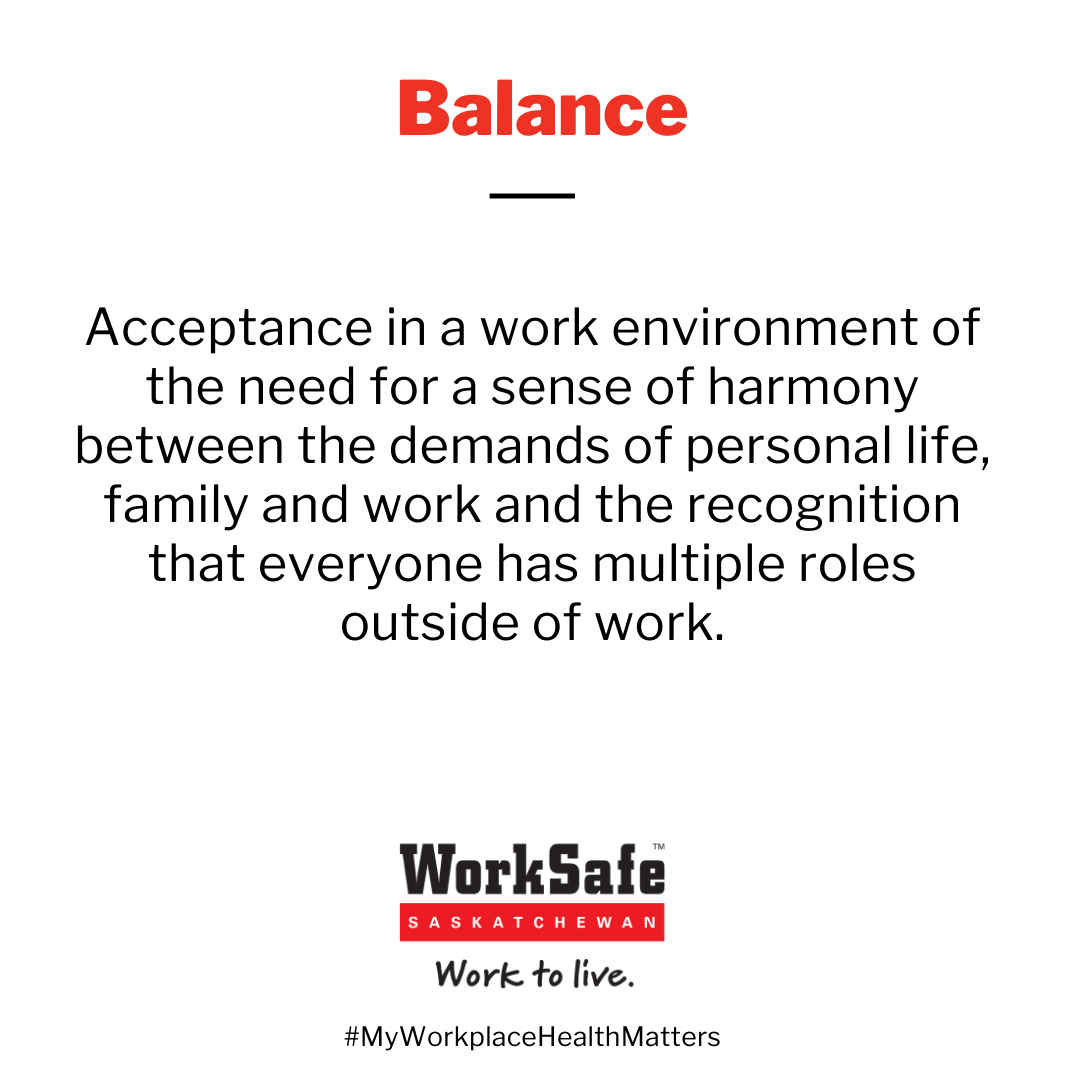 Balance
Balance
Acceptance of the need for a sense of harmony between the demands of personal life, family and work, and the recognition that everyone has multiple roles outside of work.
“Love and work are the cornerstones of our humanness.” – Sigmund Freud
Overview
What is balance?
Balance is present in a work environment where there is acceptance of the need for a sense of harmony between the demands of personal life, family and work. This reflects the fact that everyone has multiple roles: as workers, parents, partners, etc. This complexity of roles is enriching and allows fulfillment of individual strengths and responsibilities, but conflicting responsibilities can lead to role conflict or overload.
An organization with good balance would be able to state that:
- The organization encourages workers to take their entitled breaks (e.g. lunchtime, sick time, vacation time, earned days off, parental leave).
- Workers are able to reasonably meet the demands of personal life and work.
- The organization promotes life-work harmony.
- Workers can talk to their supervisors when they are having trouble maintaining harmony between their life and work.
- Workers have energy left at the end of most work days for their personal life.
FAQs
Action
Next steps: Helping employees achieve an adequate balance
Balance is psychosocial factor 11 from CAN/CSA-Z1003-13/BNQ 9700-803/2013 – Psychological Health and Safety in the Workplace. Retrieved from: https://www.csagroup.org/article/cancsa-z1003-13-bnq-9700-803-2013-r2018/. See also Guarding Minds at Work (Samra et al.): Retrieved from https://www.guardingmindsatwork.ca/resources.




